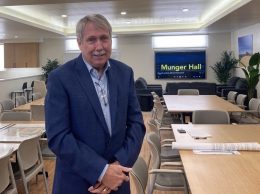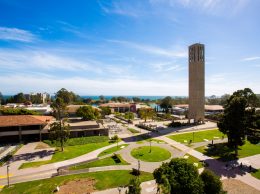Osmo wins UCSB New Venture
Osmo, a device that simplifies water sampling and makes it easier for scientists to collect water samples, won the UC Santa Barbara New Venture Competition May 19.
By winning the competition the young company won $12,500. UCSB’s Technology Management Program held the competition. About 300 students and 35 teams participated in a program that started in the fall. By the time their ideas were vetted, six finalists presented on the 19th.
In the program’s 17 year existence it has launched several successful regional startups including Salty Girl Seafood, Cayuga Biotech and Milo.
Teams had 10 minutes to pitch, which was followed by a 10-minute question-and-answer session.
Vibe, a vibrating glove that helps blind people navigate through crowds instead of using a walking cane, came in second and won $7,500.
EV Match, an app that connects electric vehicle owners with the owners of electric vehicle charging stations, took home third place and $2,500. Founder Heather Hochrein told a crowd of over 100 people that the app will be particularly useful for electric vehicle owners that rent houses or apartments and are not permitted to install charging stations at home. Users can also use the app to book appointments to charge their cars at specific times and chargers.
Osmo is made up of UCSB students Raul Sangodkar, Kyle, Neumann, Edixon Puglisi and Amjana, Krishman. The company said it already lined up $150,000 in future sales of its devices to Oregon State University and UCSB. Before starting production, the company is looking for about $70,000.
The company said often scientists collect water samples in dangerous and even deadly conditions, like during wintertime in Flint, Mich. The rig allows scientists to remotely collect water samples for testing from the shore. Testing can also be very expensive.
Judge Andrew Ogawa, managing partner and founder of Quest Venture Partners in Menlo Park, said the company proved its concept can work and sell.
“At this stage they have a product that’s basically working,” Ogawa said. “The market is still $100 million just for the academic side, but there’s so many more water districts and agencies that will need to use this device that we felt it was a big enough market.”
-Contact Philip Joens at [email protected]











